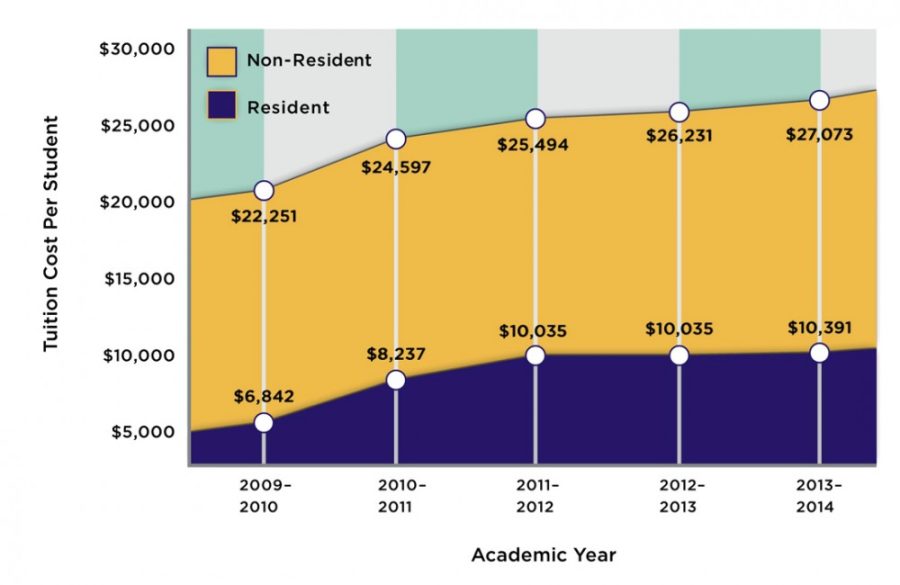UA students pay around $500 a semester in student fees. This money is allocated into several categories, such as health and recreation fees, student media fees, information technology fees, library fees and more.
“If you look at how the funding streams have changed for the universities over time, five years ago, state support was a significant, if not dominant, force in how we funded our universities,” said Eileen Klein, president of the Arizona Board of Regents. “Today, it’s tuition and fees.”
According to the bursar’s account on UAccess, the Health and Recreation Fee is $150, the Arizona Financial Aid Trust Fee is $48, the Info Technology/Library Fee is $240, the Recreation Center Retirement Bond Fee is $25, the Recreation Center Program Fee is $3.91, the Student Media Fee is $3, the Student Services Fee is $40 and the Wildcat Events Board Fee is $3.
These fees have been calculated for full-time UA students to total to $512.91. In addition, students who are classified as freshmen will also be charged an additional $10 Freshman Fee.
During the summer, the board of regents did a lot of work concerning the student fee-setting process.
“I’d like to have students become more deeply acquainted with understanding the roll that tuition and fees play in the overall success of the university,” Klein said.
The board of regents wants to focus on transparency when it comes to student fees.
“[The] Student Services Fee is $40 a semester and probably one of the best models I can think of as far as fee transparency goes,” said Issac Ortega, president of the Associated Students of the University of Arizona. “You pay it, and you can see literally every single dollar and where it’s spent.”
Ortega said he is excited about student involvement and control of money distribution.
“The cool thing is that a student board decides where the money will go,” Ortega said. “A lot of it goes to Think Tank, which is one of the coolest programs the U of A has.”
For example, students made a big push for the Student Media Fee to be implemented a few years ago.
The bursar’s account has also been reformatted on UAccess to increase accessibility to student fee information.
“We want to be sure that we have very understandable and straightforward bills and billing processes,” Klein said.
On the UAccess website, there is a link connected to a list of each student fee paid and what the fee is used for.
“You can also take a link straight to the page where you can opt out, if you choose to,” Ortega said.
A 2.5 percent convenience fee when you pay a bursar account balance with a credit or debit card has recently been added to UAccess.
“Two and half percent really adds up when you’re paying out-of-state tuition and expenses,” said Connor Cirillo, a pre-business sophomore.
Before the addition of the convenience fee, the university used money from student tuition to pay for a banking service that processed credit and debit cards.
“It actually alleviated a lot of money on the back-end from student tuition,” Ortega said.
—Follow Brandi Walker @itsbrandibb









